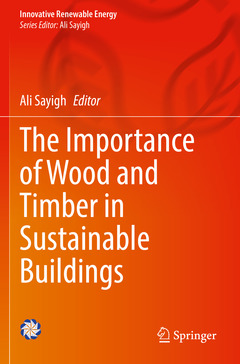The Importance of Wood and Timber in Sustainable Buildings, 1st ed. 2022 Innovative Renewable Energy Series

He started working in solar energy in September 1969. In 1972, he established with some colleagues in Saudi Arabia “The Journal of
Engineering Sciences” in Riyadh, Saudi Arabia and in 1984 he established International Journal for Solar and Wind Technology, as an Editor-in-Chief. This has changed its name in 1990 to Journal of Renewable Energy. He is editor of several International journal published in Morocco, Iran, Bangladesh, Nigeria and India. He established WREN and the World Renewable Energy Congress in 1990. Member of various societies related to climate change and renewable energy. He is Chairman of Iraq Energy Institute since 2010.
He was consultants to many national and international organizations, among them, the British Council, ISESCO, UNESCO, UNDP, ESCWA, UNIDO and UN. He run conferences and Seminars in 54 different countries, published more than 600 papers. He edited, written and associated in more than 100 books. He supervised more than 82 MSc. and 36 PhD students. He is editor-in- chief of the yearly Renewable Energy Magazine, 2000-2016. He is the founder of WREN and Renewable Energy Journal published by Elsevier & was the Editor-in-chief for 30 years from 1984 – 2014.He is the Editor-in-chief of Comprehensive Renewable Energy coordinating 154 top scientists, Engineers and researchers’ contribution in eight volumes published in 2012
Date de parution : 09-2022
Ouvrage de 311 p.
15.5x23.5 cm
Date de parution : 09-2021
Ouvrage de 311 p.
15.5x23.5 cm
Thèmes de The Importance of Wood and Timber in Sustainable Buildings :
Ces ouvrages sont susceptibles de vous intéresser

Timber Construction Manual 138,45 €


